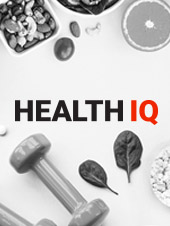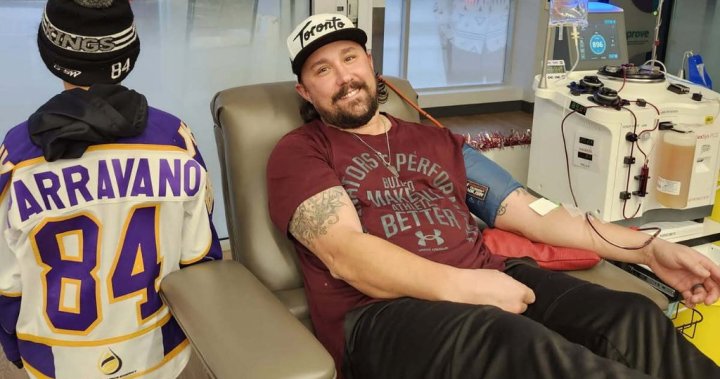Marc Parravano has donated blood 146 times.
He remembers when he was a child, he regularly went to a blood collection centre with his mother and followed in her footsteps after he was able to donate himself to the age of 17.
“I'm helping others, so I get a sense of accomplishment and reward,” Parabano, now 40, said in an interview.
He teaches that giving blood to his three sons saves life, just as his mother did for him. His 11-year-old Christian proudly went to the donation center wearing an 84 hockey jersey when Paravano made his 84th donation in December 2023.
Palavano, who lives in Vaughan, Ontario, has begun giving his whole blood. Men can do it every 8 weeks, while women can do it every 12 years. But a few years ago, he switched to donating plasma, the liquid part of blood, as plasma, as it returns to the body during the process. The body will change plasma within a few hours.
According to Canada's Blood Services, Parabano is one of 2% of eligible Canadians to donate blood and plasma. It suggests that despite recent surveys, 71% agree that it is “one of the most meaningful ways people can give back to their community.”
However, demand for blood and plasma is rising rapidly, and the current base of around 420,000 “incredibly dedicated” active donors is not sufficient, says Dr. Graham Sher, CEO of Canada's Blood Services.

On Thursday, the agency announced it plans to recruit 1 million new donors over the next five years, as it is projected to increase blood demand due to the growing population by 10%.

Get weekly health news
Receive the latest medical news and health information provided every Sunday.
The need for plasma is even higher, and in Canada, sufficient amounts are already inadequate, making sufficient immunoglobulin drugs impossible. Over the past few years, antibody therapy has been used primarily in patients with some immune deficiency, but has been used experimentally to treat a wide range of diseases, including cancer.
Demand for plasma is expected to increase at least 50% over the next five years, Shah said.
“We need to use enough plasma in Canada so that Canada can produce it from the plasma collected, rather than relying heavily on international sources,” he said.
“This is a lesson we've learned as a result of the pandemic where we can't really rely on global supply chains, especially for expensive and rare medicines like immunoglobulins.”
There are more videos in Canada
According to Sher, Blood Services Agency uses several strategies to achieve its ambitious goals.
“One of the most important barriers to donations is time and convenience,” he said.
“(People say) “I was working at an office tower in downtown Toronto and I was donating at the end of my work shift. I'm now a post-pandemic remote worker and you don't have a collection centre within 30 miles of my home.” So we're hearing a lot of it,” Shah said.
The agency also has expanded opening hours, including Saturdays in many locations.
Shah said reaching out to diverse communities and building trust is also an important part of the plan.
Some patients with illnesses respond best to blood transfusions with closely matched subtypes inherited along ethnic and racial boundaries, he said.
It is the case of sickle cell disease, which is most common in black populations, Shah said.
“If you look at donor bases today, the number of African black or Caribbean Canadians at donor bases today is significantly underestimated compared to the proportion of the population that identifies as black or Caribbean in Africa,” he said.
“It's an example of the population we want to target. This allows more donors to come in. This allows us to match our products well with Canadian patients from those population and ethnic backgrounds.”
Attracting young donors is also an important goal, Shah said.

“We're trying to build a new generation of donors from a really young age,” he said.
Motivate more people to give blood requires a different pitch than agents have done in the past, he said.
“Everyone knows that giving blood can save lives… that message has been tested, tested and used repeatedly,” Shah said.
The new marketing campaign called “Who's Saving Who?” focuses on what donors can break out of their bloody experiences, such as a sense of accomplishment and connections with others.
The video features actors portraying patients in graphic situations where blood or plasma transfusions are required, such as traumatic falls, car accidents, births, and children undergoing cancer treatment.
Each person speaks directly to the camera and tells the viewer that they are giving them the opportunity to be given to them.
“This campaign is intended to surprise people from self-satisfaction — giving blood (knowing) is a good thing to do,” Shah said.
& Copy 2025 Canada Report

